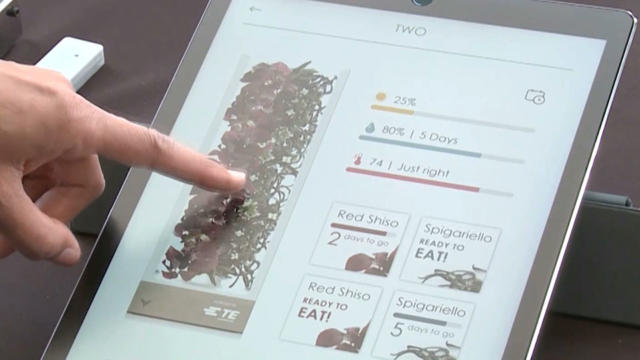The Forbes Agtech Summit just wrapped up in Salinas, California, bringing in more than 600 agriculture leaders and entrepreneurs to discuss the future of the industry. As big companies and government have traditionally steered the direction of agriculture, startups are now taking on a greater share of that role.
CGTN’s Mark Niu reports.
Navigating farmland in different cities and even different countries.Farmer Dale Arthur is using aerial telepresence software from Silicon Valley startup Cape to fly drones for the first time.
“Anybody can use it to go out and maybe monitor their irrigation, monitor maybe their labor,” Arthur, who is the farm manager at Capital Agricultural Property Services said. “Myself, I’d maybe like… they used the example of checking cattle, checking soil, checking water out on the range.”
Cape is one of 60 startups at the Innovation Showcase at the Forbes AgTech Summit. At the event, Silicon Valley–based investors John Hartnett and Ralph Borelli announced plans to build this 19,000-plus square meter business and technology park to help agtech startups grow.
“I think this is a super-hot space. It’s not a one-year wonder, it’s going to be a hundred-year wonder because food and water are the main ingredients of what we live on this planet for,” said John Hartnett, Founder and CEO of SVG Partners. “Agriculture is hundreds of years old, it really hasn’t been disrupted in the Silicon Valley style.”
The field of robotics is increasingly playing a role in the agriculture industry. I tried out a robotic gripper from Soft Robotics. In the past, robots could pick up just one type of object. But this gripper configures to each object. That’s very important for the food industry when products are never the same size. The robots are sanitary enough to meet the standards of handling raw meat. The goal is someday to have them working in the fields.
“We’ve demonstrated that we can harvest, we can pick tomatoes off the vine, we can pick strawberries off the bush,” said Carl Vause, the CEO of Soft Robotics. “So I think solving for labor across the supply chain from harvest to pack house.”
Verdical is bringing the field… indoors. Several San Francisco chefs are using the app-controlled system to grow herbs and microgreens inside their restaurant.
“You can beat nature by a little bit because you don’t have wind, you don’t have pests, you are optimizing light, optimizing nutrients and water,” Andrew Deitz, CEO of Verdical said. “We see everyone anywhere as our target market. In the restaurant or food service industry there’s a couple of billion dollars there, there’s the office, there’s the home.”
“So if you look at the food and agtech space in venture capital, it’s gone from being about $2 billion four or five years ago to $10 billion today,” said Hartnett. “That’s faster than AI, which is the hottest thing everyone is talking about right now.”
Hartnett cites shrinking supplies of water and arable land and the labor shortage as key challenges in the agriculture industry. He says that when you have to do more with less, the only solution is innovation.
 CGTN America
CGTN America

